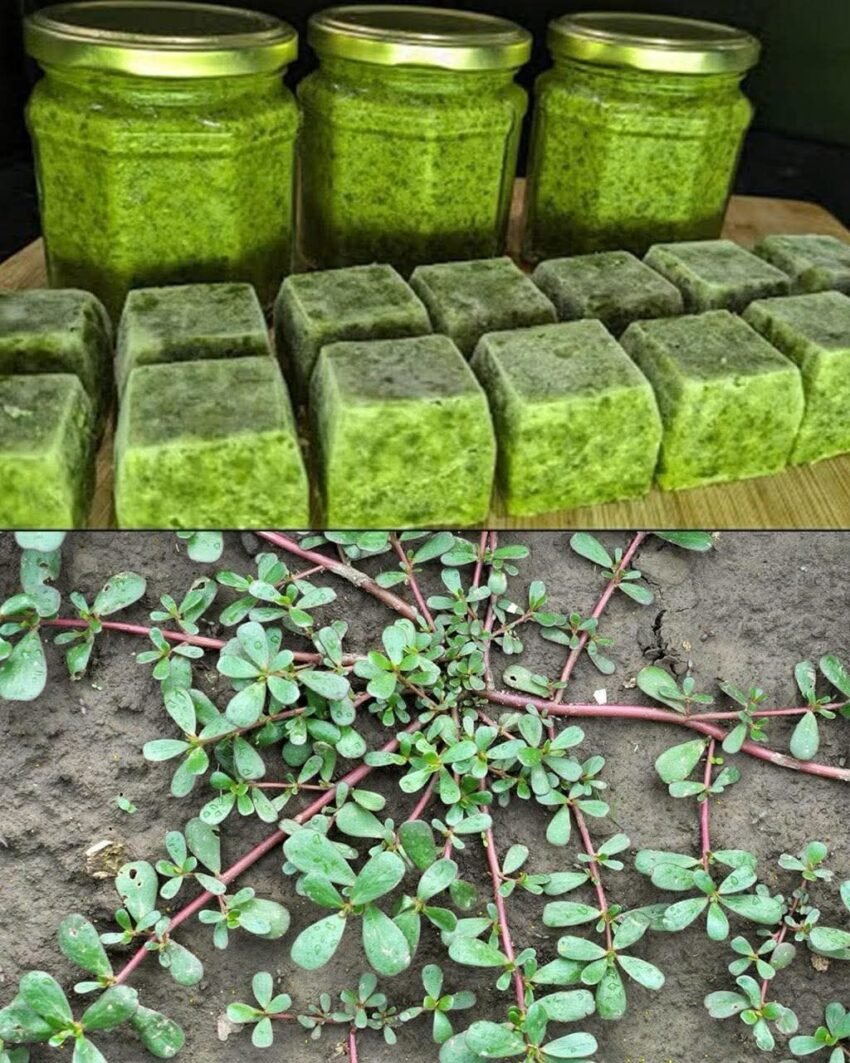Common Purslane (Portulaca oleracea) is a low-growing, succulent weed found in gardens and sidewalks around the world — but it’s more than just a weed! It’s an edible plant rich in nutrients and has been used in traditional medicine and cooking for centuries.
🌿 Overview of Common Purslane
🔍 Scientific Name:
-
Portulaca oleracea
🏷️ Other Names:
-
Verdolaga (Spanish)
-
Pigweed
-
Little Hogweed
-
Pursley
-
Ma Chi Xian (in Chinese medicine)
🌍 Native Regions:
-
Likely native to the Middle East or India but now grows globally in warm climates.
🌱 What It Looks Like
-
Leaves: Smooth, fleshy, oval-shaped green leaves.
-
Stems: Reddish, thick, and sprawling along the ground.
-
Flowers: Tiny yellow flowers that bloom in sunlight.
-
Growth habit: Spreads low and wide, forming mats.
🍴 Edible Uses
All aerial parts of the plant (leaves, stems, and flowers) are edible and have a slightly tangy, lemony flavor due to oxalic acid. It can be eaten raw or cooked.
🥗 How to Eat It:
-
Raw: In salads, sandwiches, wraps, smoothies.
-
Cooked: In soups, stir-fries, stews, omelets.
-
Pickled: Common in Mediterranean and Middle Eastern cuisines.
-
Thickener: Its mucilaginous quality makes it good for thickening soups/stews (like okra).
💪 Nutritional Benefits
Purslane is incredibly nutrient-dense for such a common plant:
-
Omega-3 fatty acids (ALA) – more than most leafy greens
-
Vitamins A, C, and E
-
Magnesium, iron, calcium, and potassium
-
Antioxidants like glutathione and melatonin
-
Low in calories
⚠️ Contains oxalates – people prone to kidney stones should consume in moderation or cook it to reduce levels.
🌿 Medicinal Uses (Traditional & Folk)
Used in various traditional systems (Chinese, Ayurvedic, Middle Eastern):
-
Anti-inflammatory
-
Antimicrobial
-
Skin soother (used topically for burns, rashes)
-
Mild diuretic
-
Gastrointestinal aid
These uses are traditional and not all are backed by clinical research.
🪴 Foraging & Gardening Tips
-
Grows wild in sunny, dry spots — very drought-tolerant.
-
Harvest before it flowers for best texture.
-
Can be grown intentionally in home gardens as a ground cover or edible crop.
-
Avoid harvesting from roadsides or sprayed areas (may contain herbicides).
🍳 Simple Recipe: Purslane Stir-Fry
Ingredients:
-
2 cups fresh purslane (washed & chopped)
-
1 tbsp olive oil
-
2 cloves garlic, minced
-
Pinch of salt & chili flakes
Instructions:
-
Heat oil in a skillet, sauté garlic until fragrant.
-
Add purslane and cook 2–3 minutes, until wilted.
-
Season and serve as a side or on toast.
Would you like:
-
More recipes using purslane?
-
A guide to growing it at home?
-
A comparison with other edible weeds (like lamb’s quarters or amaranth)?
